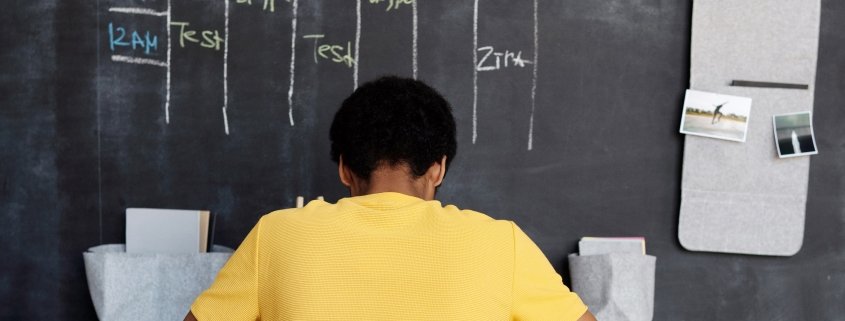England COVID-19 education response

The UK has been slow in its response to Covid-19 and only implemented a lock-down on 23 March 2020. This has been less strict then in most other countries in Europe and since the w/c 11 May is has been eased further, mainly to encourage people to go back to work ‘if they can’ , although much confusion consists about the exact regulations and advice. At the time of writing (17/5/20), the UK is generally considered to have the worst Covid-19 situation in Europe with 243,303 confirmed positive cases and 34,636 confirmed deaths. All schools have been closed on 20 March 2020. It is not yet official when schools are due to reopen again, but in a televised speech on 10 May 2020, the prime minister announced from 1 June 2020 ‘at the earliest’ schools could be reopened again . It was later clarified that this would happen in stages with some primary school pupils first, others after that and secondary school pupils later. Although the 1 June date is still not formally confirmed, there is resistance to this from some regional and city authorities in the North of England as well as several teacher trade unions and many parents who believe this is too soon. The closure applied to all schools, including nurseries and private (‘public’) schools. The school closure was announced on 18 March and effectively started on 23 March, so schools had a few days to prepare. This was 2 weeks before the official Easter break.
The government has asked schools to remain open for children of critical workers and vulnerable children where they can. The official guidance states that: “We understand that some [schools] may be unable to do so, especially if they are experiencing severe staff shortages. In that instance, we will work with local areas to use neighboring settings to continue to support vulnerable children and children of critical workers. To make this easier, we have made temporary changes to the law to allow vulnerable children and the children of critical workers to attend another school, on a temporary basis, if their school is closed. The changes ensure they can return to their normal school once it reopens” Due to relative autonomy of local educational authorities and (even more autonomous) academies and private (‘public’) schools, the way schools and teachers are coping with distant teaching & learning is highly diverse. The government has provided guidance for distant teaching and home schooling but this does not appear to be very directive.
The UK already has one of the largest attainment gaps between disadvantaged and non-disadvantaged pupils and many organisations and experts have highlighted how the current situation will only worsen this due to unequal study and support conditions at their homes. Comparison has been made with the annual “learning loss” that is experienced by pupils during Summer holidays. “The vast majority of children decline academically over the long summer break, but for disadvantaged children the effect is particularly pronounced: evidence suggests that the summer holidays might account for almost two thirds of the attainment gap between rich and poor children at age 14”. Responsibility for primary and secondary education is decentralized to local authorities, ‘academy trusts’ and (private) schools themselves and support given on this (and other) issues is highly diverse. A digital divide has become even more apparent during the current crisis. The central government does have a programme in place to provide support to these decentralized bodies, but it’s not really clear how effective this is.
No specific data is available on parents, but from the vast amount of guidance available on provision of mental health support of parents and carers (as well as their children) during the Covid-19 crisis, it is clear that many parents are having difficulty coping.
Centralized final exams that normally take place over the Summer have all been cancelled. At the moment of writing, it is not clear how and when these will be rescheduled. Fairly detailed guidance has been given to schools, colleges and universities on how to go ahead with pupil and student admissions to the next levels of education, which will how have to be based on previous work, school exams, etc.
The government did not officially close universities. Universities in the UK can make autonomous decisions about closures, so the actual situation is specific in each case. However, due to the overall measures of lock-down and social distancing, in practice the decision space of universities has been very limited.
There is a lot of anecdotal information available about the challenges teachers are facing balancing distance teaching with supporting the well-being and safety of their pupils in these difficult and often stressful times. This should also be related to the relatively high levels of child poverty and deprivation in the UK where schools/teachers often play a broader role in feeding and safeguarding many pupils. At the moment, there is a lot of concern as well about the government plans to reopen schools again at a time when many teachers don’t believe it’s safe to return.
No specific data available and this again depends hugely between universities, study areas (more or less intensive) and individual student characteristics. Some evidence shows that many students are having difficulty coping with distance learning. As disadvantage comes in different shapes and forms, it’s difficult to draw clear conclusions on where extra difficulties lie for disadvantaged students during these times. In the UK, there is much reference to the extra difficulties of poorer students who are now not able to work besides their studies as most of the jobs they hold (e.g. in hospitality) are being cancelled, students who suffer from mental health issues and students who are not able to stay with their family (e.g. many LGBTQ+ students).



Leave a Reply
Want to join the discussion?Feel free to contribute!